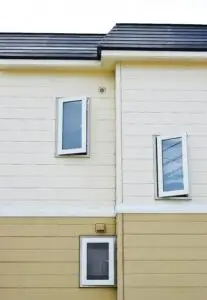Spray foam insulation stands out among options like cellulose, wool, and traditional fireproofing methods. This innovative foam solution offers superior insulation properties, making it a smart investment for homeowners looking to improve energy efficiency.
Understanding the durability and longevity of spray foam insulation is crucial for those considering this option for their homes.
In this article, we’ll explore the lifespan, maintenance requirements, and long-term effectiveness of spray foam insulation to help you make an informed decision.
Key Takeaways
- Spray foam insulation can last up to 50 years or more when properly installed
- Regular inspections and maintenance can significantly extend the lifespan of spray foam insulation
- Factors like moisture, pests, and extreme temperatures can affect spray foam insulation’s longevity
- Spray foam insulation generally outlasts traditional materials like fiberglass or cellulose
- Properly installed spray foam can retain up to 95% of its insulating properties after 20 years
What Is the Lifespan of Spray Foam Insulation?
Spray foam insulation will endure for the lifetime of the building. Unlike traditional insulation materials, spray foam retains its form and effectiveness. It forms an airtight seal, preventing air leakage and moisture problems, which contributes to its remarkable durability. Ensuring proper installation and maintenance guarantees that this modern insulation technology will provide long-lasting performance.
This advanced insulation technology offers long-lasting performance when properly applied and maintained.
Understanding the factors that influence its durability, how it compares to other insulation types, and recognizing signs of aging can help homeowners maximize the benefits of their spray foam coating. By examining these aspects, property owners can make informed decisions about their insulation needs and ensure optimal energy efficiency for years to come.
Factors Influencing the Lifespan of Spray Foam
Several factors can affect the longevity of spray foam insulation. Exposure to moisture, pests, and extreme temperature fluctuations may impact its performance over time. The presence of mold, mildew, or other biological growth can also compromise the insulation’s effectiveness. Unlike traditional materials such as wool, spray foam is less susceptible to these issues when properly installed. However, regular inspections and maintenance of the home itself—such as the substrate, roof deck, and overall structure—are crucial to ensure the long-term durability of the foam.
Spray Foam Lifespan Compared to Other Insulation Types
Spray foam insulation, such as RetroFoam, will last in your home for as long as the structure is standing. Unlike traditional insulation materials like fiberglass or cellulose, which can shift, sag, or settle over time, spray foam maintains its integrity. It creates an air seal that prevents air movement and moisture issues, contributing to its exceptional longevity. This unique composition ensures consistent performance and durability, outlasting conventional options.
Signs That Your Spray Foam Insulation Is Aging
Homeowners can spot signs of aging spray foam insulation by monitoring changes in energy bills, indoor comfort, and humidity levels. Increased utility costs or inconsistent temperatures throughout the building may indicate a decline in insulation performance. Unlike fiberglass, spray foam rarely settles or sags, but cracks or gaps in the foam can develop over time, reducing its effectiveness as building insulation. Addressing these issues promptly can help maintain the long-term return on investment and prevent early insulation replacement.
Does Spray Foam Insulation Involve Any Routine Upkeep?
Spray foam insulation, a popular choice for home improvement projects, requires minimal upkeep compared to traditional insulation materials. However, periodic checks and simple maintenance can significantly extend its lifespan and ensure optimal performance. By understanding the basic care requirements, homeowners can protect their investment and maintain the insulation’s effectiveness in reducing air infiltration and improving energy efficiency. Regular inspection of the spray foam’s condition, addressing any construction-related issues that may affect it, and maintaining proper ventilation are key factors in preserving the integrity of this chemical substance over time.
Minimal Maintenance Requirements for Spray Foam
Spray foam insulation boasts a long life expectancy and requires minimal upkeep. Homeowners can protect their investment by periodically inspecting walls for any signs of damage or degradation, particularly in areas exposed to ultraviolet light. While routine maintenance is generally unnecessary, addressing any issues promptly can save money in the long run. For more detailed information on spray foam maintenance, interested individuals can tune into industry podcasts or consult with professionals:
| Maintenance Task | Frequency | Purpose |
|---|---|---|
| Visual Inspection | Annually | Check for cracks or gaps |
| UV Protection | As needed | Prevent degradation from sunlight |
| Professional Assessment | Every 5-10 years | Ensure optimal performance |
Tips for Extending the Life of Your Spray Foam Insulation
Homeowners can extend the life of their spray foam insulation by maintaining proper indoor air quality and addressing potential issues in areas like the basement and roof. Regular inspections by professional spray foam installers can identify and rectify any problems early on, preventing long-term damage. Ensuring proper ventilation and controlling moisture levels throughout the home helps preserve the insulation’s integrity and maintain its energy-saving properties.
Periodic Checks to Ensure Spray Foam Integrity
Regular checks of spray foam insulation help maintain its integrity and effectiveness. Homeowners should inspect their attics and other insulated areas for signs of damage, such as cracks or gaps in the polyurethane foam. These inspections can also reveal potential noise reduction or energy efficiency issues, which may affect home insurance premiums. Additionally, periodic assessments ensure the insulation continues to meet green building standards and contributes to a sustainable living environment.
Could Spray Foam Incur Unforeseen Maintenance Costs?
While spray foam insulation is known for its durability and long-lasting performance, homeowners should be aware of potential maintenance costs that may arise over time. This advanced insulation material, available in both open-cell and closed-cell varieties, can occasionally require repairs or maintenance due to various factors.
Understanding the common causes of spray foam issues, estimating potential costs, and knowing how to address damage can help property owners maintain their insulation’s effectiveness. From addressing problems in roofs to ensuring proper soundproofing, homeowners can protect their investment and potentially avoid the need for a full replacement.
It is recommended that all concerns be discussed with a professional insulation installer at Mammoth to gauge the initial and potential long-term costs associated with this inch-thick insulation solution.
Common Causes of Spray Foam Repairs
Spray foam insulation repairs may become necessary due to various factors, potentially incurring unforeseen costs for homeowners. Extreme heat can cause polyurethane foam to degrade over time, affecting its insulating properties and potentially leading to health concerns if not addressed promptly. Additionally, improper installation or damage to the surrounding structure can compromise the integrity of the foam, requiring professional intervention as per the terms of service provided by installers.
Estimating Potential Costs for Spray Foam Maintenance
Estimating potential costs for spray foam maintenance requires considering factors that affect its longevity compared to other insulation materials like cellulose or mineral wool. While spray foam generally offers superior thermal insulation and resistance to water damage, unexpected repairs may arise due to improper installation or environmental factors. Homeowners should budget for periodic inspections and potential touch-ups to maintain the foam’s effectiveness, which can range from a few hundred to several thousand dollars depending on the extent of the maintenance required.
How to Address Spray Foam Insulation Damage
Addressing spray foam insulation damage requires prompt action to prevent further issues with heat transfer and energy efficiency. Professional inspection is crucial to assess the extent of the damage and determine the best course of action. In some cases, repairing or reapplying spray foam to affected areas may be sufficient. At the same time, more extensive damage might necessitate installing spray foam insulation in larger sections or even complete replacement.
Does Spray Foam Lose Its Effectiveness Over Time?
Spray foam insulation is renowned for its long-lasting performance, but questions about its effectiveness over time persist. As buildings age and environmental factors take their toll, it’s natural to wonder if this insulation material maintains its initial properties. This section examines the durability of spray foam insulation, exploring potential compromising factors and evaluating its long-term performance. By understanding these aspects, property owners can make informed decisions about their insulation needs and maintenance strategies.
Analyzing the Durability of Spray Foam Insulation Properties
When properly installed, spray foam insulation maintains its effectiveness for decades. Its closed-cell structure resists moisture and air infiltration, preserving its insulating properties over time. While some minor settling may occur, the overall performance of spray foam remains stable, making it a durable choice for long-term energy efficiency in buildings.
Factors That May Compromise Spray Foam Efficiency
Several factors can compromise the efficiency of spray foam insulation over time. Exposure to excessive moisture, UV radiation, or extreme temperature fluctuations may degrade the foam’s structure, reducing its insulating properties. Improper installation techniques, such as inadequate mixing of components or applying the foam in unfavorable conditions, can also lead to premature deterioration and diminished performance.
Long-Term Performance of Spray Foam Insulation
Spray foam insulation demonstrates remarkable long-term performance, maintaining its effectiveness for several decades. Studies have shown that properly installed spray foam can retain up to 95% of its insulating properties after 20 years. This durability stems from its closed-cell structure, which resists moisture penetration and structural shifts, ensuring consistent thermal resistance throughout the building’s lifetime.
The Bottom Line About the Longevity of Spray Foam Insulation
Spray foam insulation is a superior long-term solution for home and building insulation. Its unique properties and composition contribute to its exceptional durability, often outlasting traditional insulation materials by decades. This section examines why spray foam insulation has such impressive longevity, how property owners can maximize their investment in this technology, and the key considerations for choosing spray foam as a long-term insulation solution. By understanding these aspects, readers can make informed decisions about their insulation needs and ensure optimal energy efficiency for years to come.
Why Spray Foam Lasts Longer Than Other Insulation Options
Spray foam insulation outlasts other options due to its unique chemical composition and application method. The foam expands and hardens, creating a seamless barrier that resists settling, sagging, and compression over time. This stability, combined with its resistance to moisture and air infiltration, allows spray foam to maintain its insulating properties for decades, often exceeding the lifespan of traditional materials like fiberglass or cellulose.
Making the Most Out of Your Spray Foam Insulation Investment
Maximizing the benefits of spray foam insulation requires proper maintenance and timely repairs. Homeowners should schedule regular inspections to identify and address any issues early on, preventing potential energy loss and structural damage. Additionally, maintaining proper ventilation and controlling indoor humidity levels can help preserve the insulation’s effectiveness, ensuring a long-lasting return on investment.
Final Thoughts on Choosing Spray Foam for Long-Term Insulation
Choosing spray foam insulation for long-term use offers numerous benefits, including energy efficiency, moisture resistance, and structural support. However, property owners should carefully consider factors such as installation costs, potential maintenance needs, and environmental impact before deciding. To ensure the best results, it’s crucial to work with experienced professionals at Mammoth who can provide proper installation and ongoing support:
- Assess the specific insulation needs of the property
- Compare spray foam with other insulation options
- Consider the long-term cost savings on energy bills
- Evaluate the environmental impact and sustainability
- Choose a reputable installer with proper certifications
- Plan for regular inspections and maintenance
Conclusion
Spray foam insulation offers exceptional longevity, often outlasting traditional insulation materials by decades. Its unique chemical composition and application method create a seamless barrier that resists settling, moisture, and air infiltration, maintaining its effectiveness for up to 50 years or more. While minimal maintenance is required, periodic inspections and prompt repairs can further extend its lifespan and ensure optimal performance. By understanding the factors that influence spray foam’s durability and following proper maintenance practices, homeowners can maximize their investment and enjoy long-term energy efficiency benefits.















